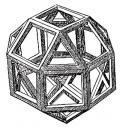Cinema of France
From The Art and Popular Culture Encyclopedia

|
Related e |
|
Featured: |
The art of filmmaking within the nation of France or by French filmmakers abroad is collectively known as French cinema. One of the best-known French films today is Amélie.
Contents |
Context
France, especially Paris, has long been a gathering spot for artists from across Europe and the world. For this reason French cinema is sometimes intertwined with the cinema of foreign nations. Directors from nations such as Poland (Krzysztof Kieslowski, Andrzej Żuławski), Argentina (Gaspar Noe, Edgardo Cozarinsky), and the Soviet Union (Alexandre Alexeieff, Anatole Litvak, Gela Babluani) are equally prominent in the ranks of French cinema as the native Frenchmen.
History
Late 19th century to early 20th century
In the late 19th century, during the early years of cinema, France produced several important pioneers. Auguste and Louis Lumière invented the cinématographe and their screening of L'Arrivée d'un train en gare de la Ciotat in Paris in 1895 is marked by many historians as the official birth of cinema. During the next few years, filmmakers all over the world started experimenting with this new medium, and France's Georges Méliès was influential. He invented many of the techniques now common in the cinematic language, and made the first ever science fiction film A Trip to the Moon (Le Voyage dans la Lune, 1902).
In 1937 Jean Renoir, the son of famous painter Pierre-Auguste Renoir, directed what many see as his first masterpiece, La Grande Illusion (The Grand Illusion). In 1939 Renoir directed La Règle du Jeu (The Rules of the Game). Several movie critic's have cited this film as one of the greatest of all-time.
Marcel Carne's Les Enfants du Paradis (Children of Paradise) was filmed during World War II and released in 1945. The three hour film was extremely difficult to make due to the conditions during the Nazi occupation. Set in Paris in 1828, the film was voted "Best French Film of the Century" in a poll of 600 French critics and professionals in the late 1990s.
Post-World War II: 1940s-1970s
In the critical magazine Cahiers du cinéma founded by André Bazin, critics and lovers of film would discuss film and why it worked. Modern film theory was born there. Additionally, Cahiers critics such as Jean-Luc Godard, François Truffaut, Claude Chabrol, etc. went on to make films themselves, creating what was to become known as the French New Wave. Some of the first movies of this new genre was Truffaut's The 400 Blows (Les Quatre Cent Coups, 1959) starring Jean-Pierre Léaud and Godard's Breathless (À bout de souffle, 1960), starring Jean-Paul Belmondo.
See also


